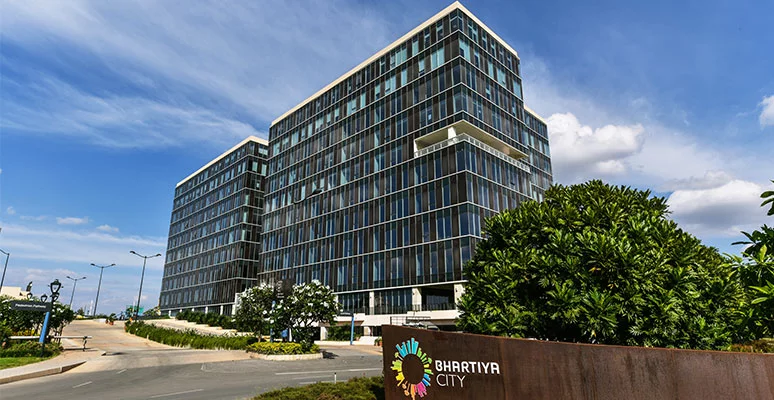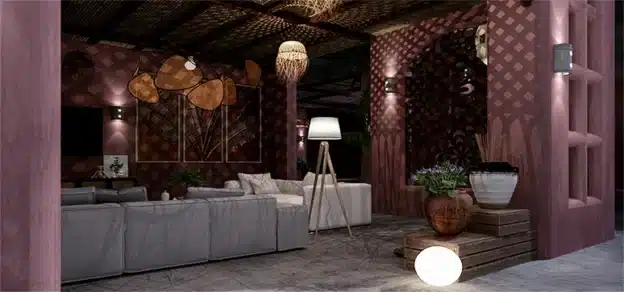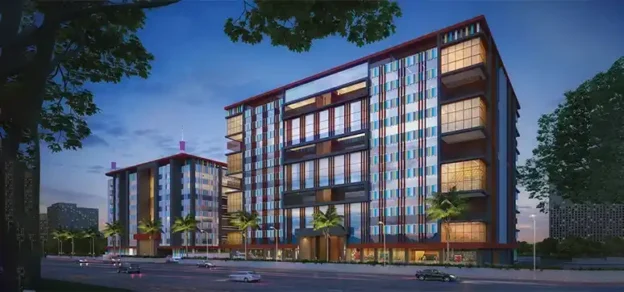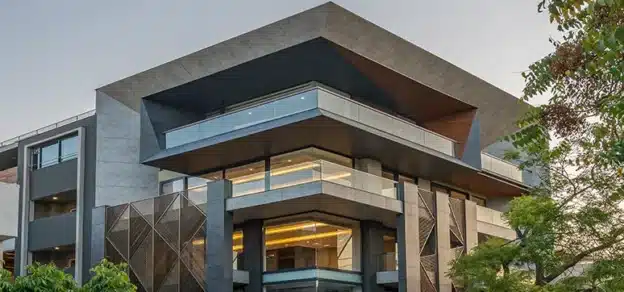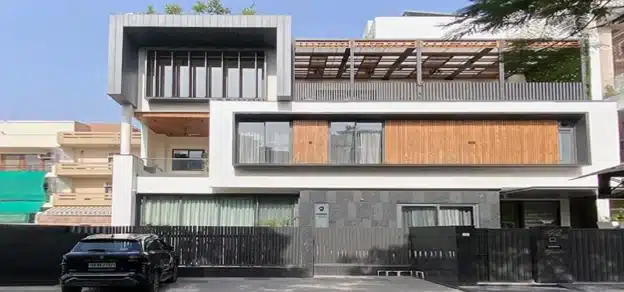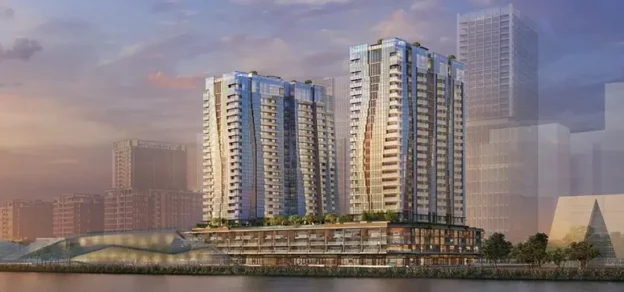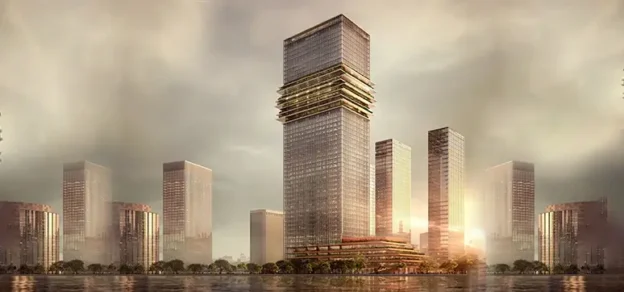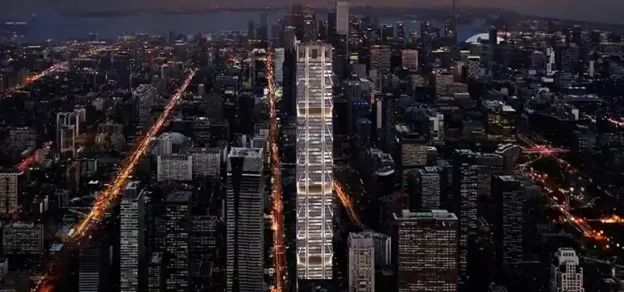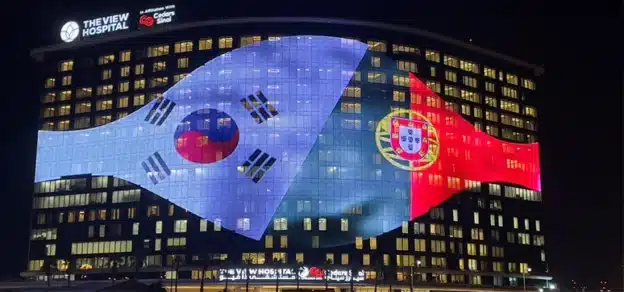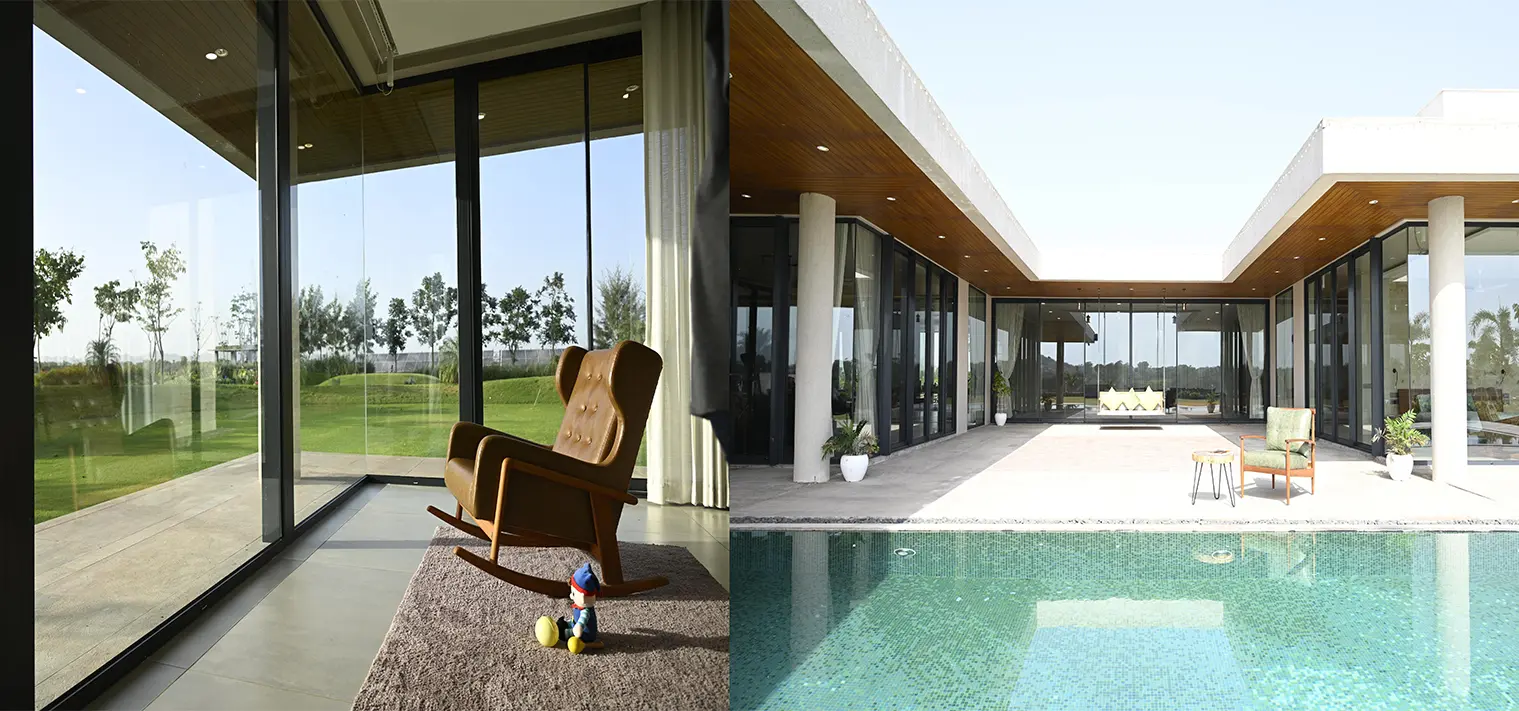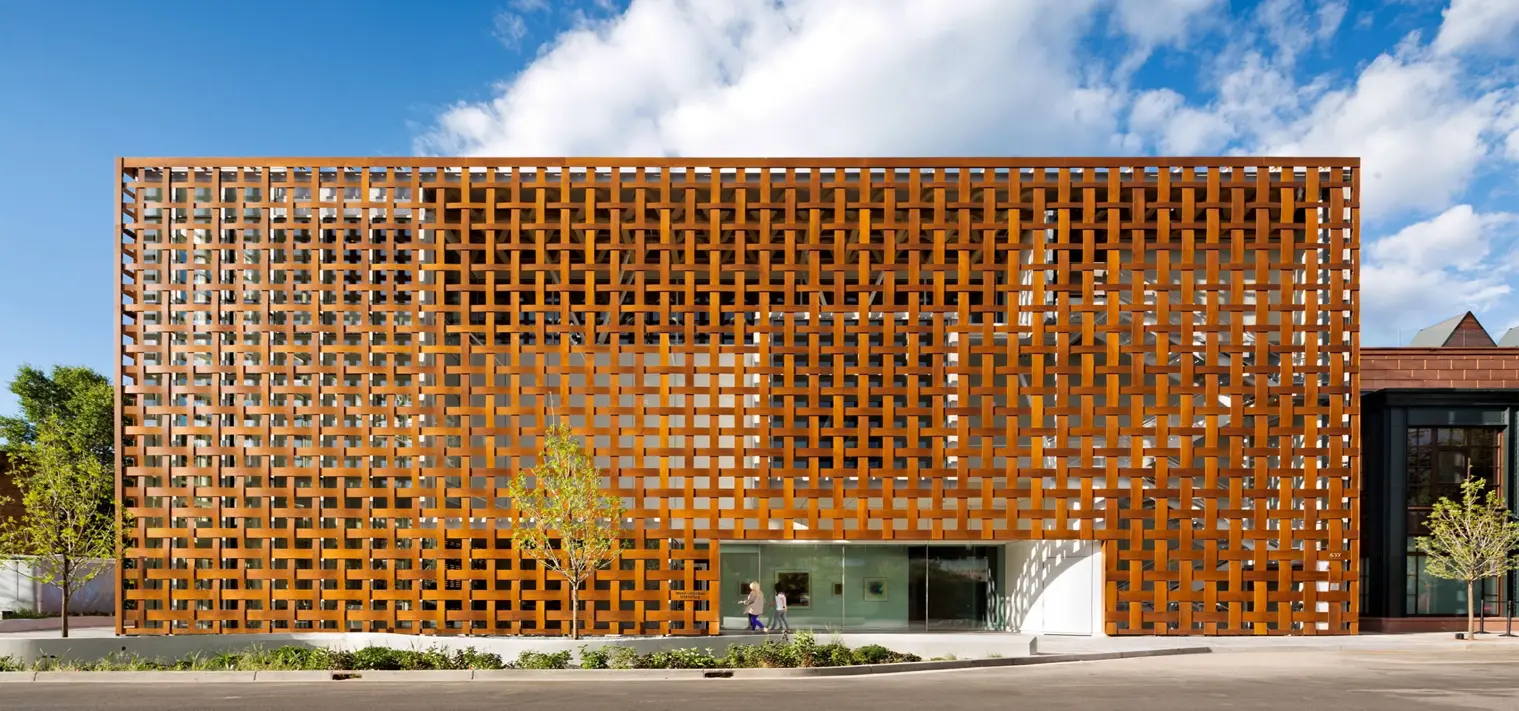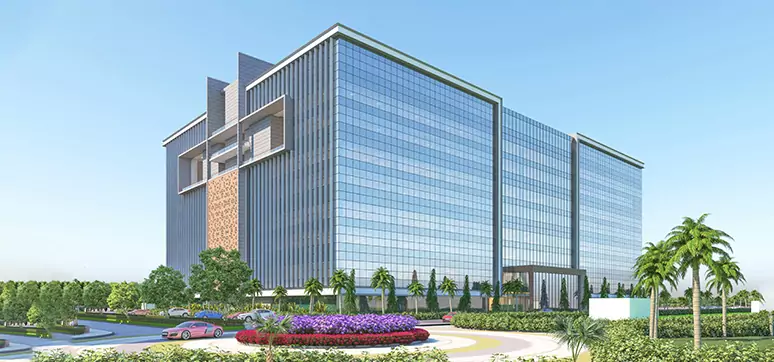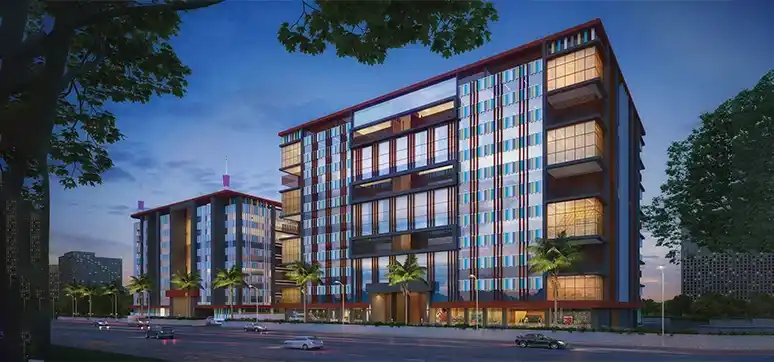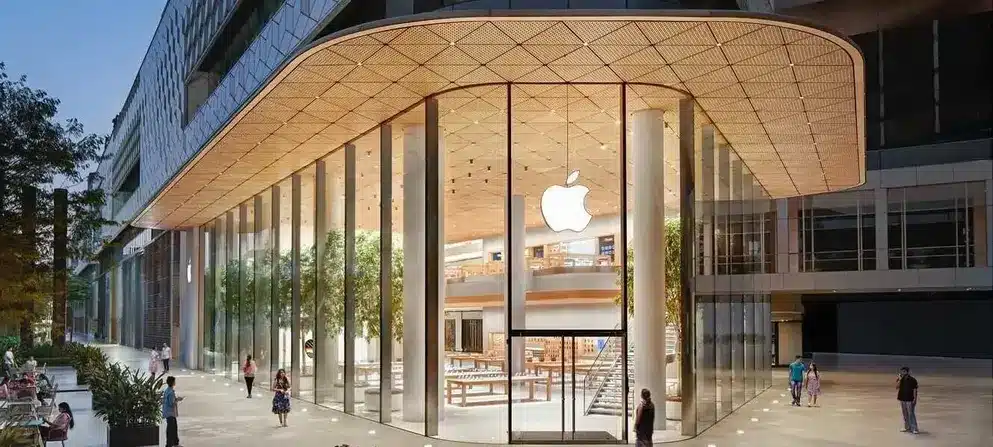Bhartiya Centre for Information Technology (BCIT) is a modern, self-contained office complex that prioritises adaptability, spatial flexibility and energy efficiency to achieve a collaborative, socially-oriented workspace for the modern Indian workforce.
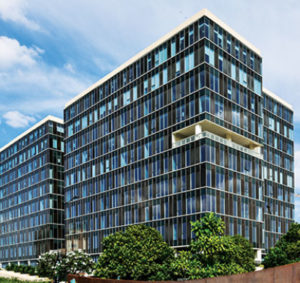
With Bengaluru becoming one of the fastest-growing hubs for IT development in the past eight years, the 25-acre master plan for BCIT brings back the idea of the green oasis as a vital node of Bhartiya City. Consisting of three towers arranged on the periphery of a 5-acre park, BCIT strives to bring the notion of ‘an office in a park’ to life. The three towers are also linked to each other at the podium level, which is free of any vehicular movement (except fire tender access) making it a haven for pedestrian connectivity and cultivating the idea of chance interactions and networking.
The IT Centre integrates itself with the larger scheme of Bhartiya City through its centralised location, which allows the residents of Bhartiya City to walk to work and enjoy a greater standard of living through reduced commute timings and consequently lowered environmental pollution.
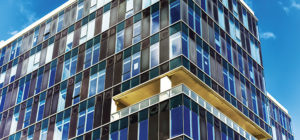
Two towers of the master plan stand completed; of these, the first one is occupied with a LEED Gold rating, materialising the envisioned sustainable design. Block 1 of BCIT consists of a G+9 tower, housing four saleable units on each floor. The office units are located around a central circulation and service core, allowing equal access to each workspace. Block 2 has been designed as a G+13 tower, and Block 3 is G+18. The building floor plates are rectilinear, with their longer sides facing east-west in two buildings, and north-south in one.
Facade Strategy At IT Centre :
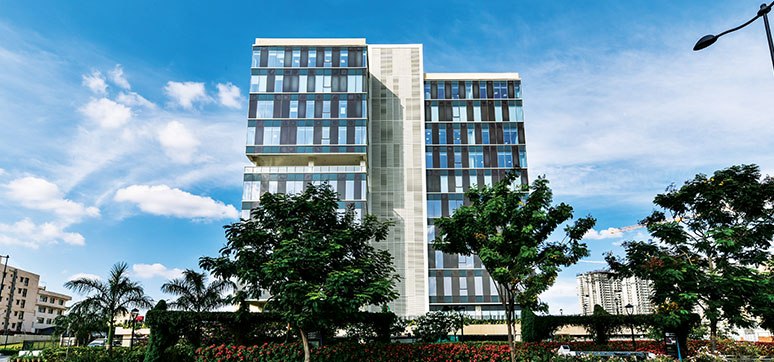
A façade strategy utilising opaque and translucent panels articulated by vertical fins has been derived to optimise daylight penetration; a combination of fritting on the glass panels and tinted performance glass has been used to control heat gain from east and west, which also introduces dynamism in the façade appearance. The panel sizes have been configured to ensure maximum material savings and run in sync with the structural grid.
The buildings have breaks introduced in the longer façades in order to reduce the net glazed surface – this also allows the centrally located core area to be ventilated and lit naturally, reducing the dependence on mechanical systems. The width of the blocks allows for maximum ingress of daylight on each floor, enabling natural lighting within the offices and reducing dependency on artificial lighting.
Refuge terraces have been introduced in the north and south façades, which can also be used as break-out zones for the offices, enhancing the user experience and allowing further daylight penetration. The façade strategy has helped facilitate minimal dependence on mechanical lighting, reducing the carbon footprint of the building – one among many green features of this LEED Gold-rated building.
Other Notable Features
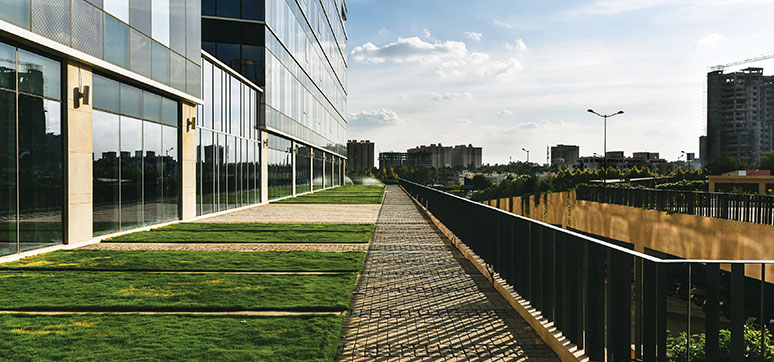
Affordable and clean energy: The natural site slopes have been used to allow the first basement to be naturally ventilated in part, reducing the energy requirement of the building. Optimised circulation scheme: Within the tower, the office units are located around a central circulation and service core, allowing equal access to each workspace. At the broader schematic level, the common park is accessible to all and encourages interaction and socialisation among all users.
Landscaping Strategy for Promoting the Wellness :
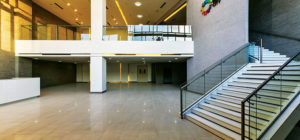
The larger landscape zone between Tower 3 and the first 2 towers has been carefully designed to incorporate sports courts to promote a healthy lifestyle, gathering spaces for interactions and knowledge sharing, and leisure spaces for unwinding and relaxation. The 25-acre master plan for the Bhartiya Centre for Information Technology consists of a 5-acre open space designed as a park, which acts as the green lungs of the campus and promotes the wellness of the users.
Water Conservation at IT Centre :
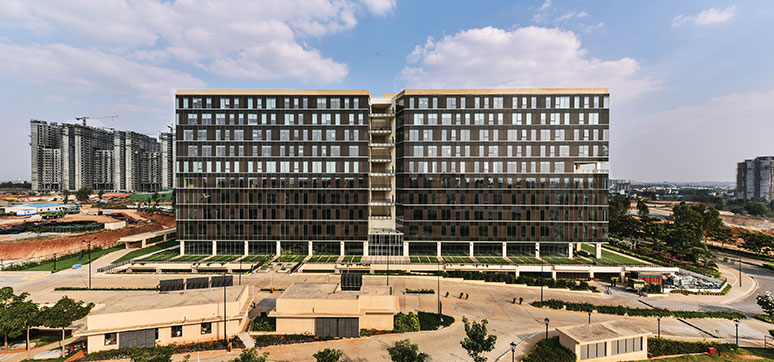
Small water bodies within the landscape have been located after a study of the shade areas, to reduce evaporation. The water is sourced from recycled STP water, ensuring self sufficiency. Site paving of grass and concrete encourages percolation of surface run-off to the water table.
QUICK FACTS :
Project: Bharatiya Centre of Information Technology
Location: Bharatiya City, Bengaluru
Client: Arjun Aggarwal, Milestone Buildcon Pvt. Ltd.
Principal Architects: Manoj Choudhury, Mahesh Thakur, Swapna Pikale, Ramesh Deshpande & Sachin Vidwans
Consultants:
- Façade: Façade India Testing Inc.
- Structural: Innotech Engineering Consultants Pvt. Ltd.
- Mechanical: Ralys Consulting Engineers
- Electrical: Ralys Consulting Engineers
- Plumbing: Sampath Kumar Associates Ptv. Ltd.
- PMC: DTZ International Property Advisors Ptv. Ltd.
Date of Commencement: May 2012
Expected Date of Completion: 2022 (Tentative)
Photographer: Prashant Bhatt
